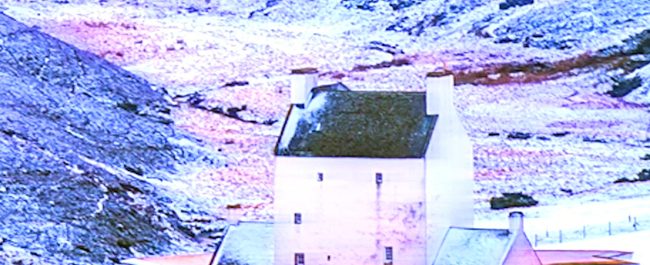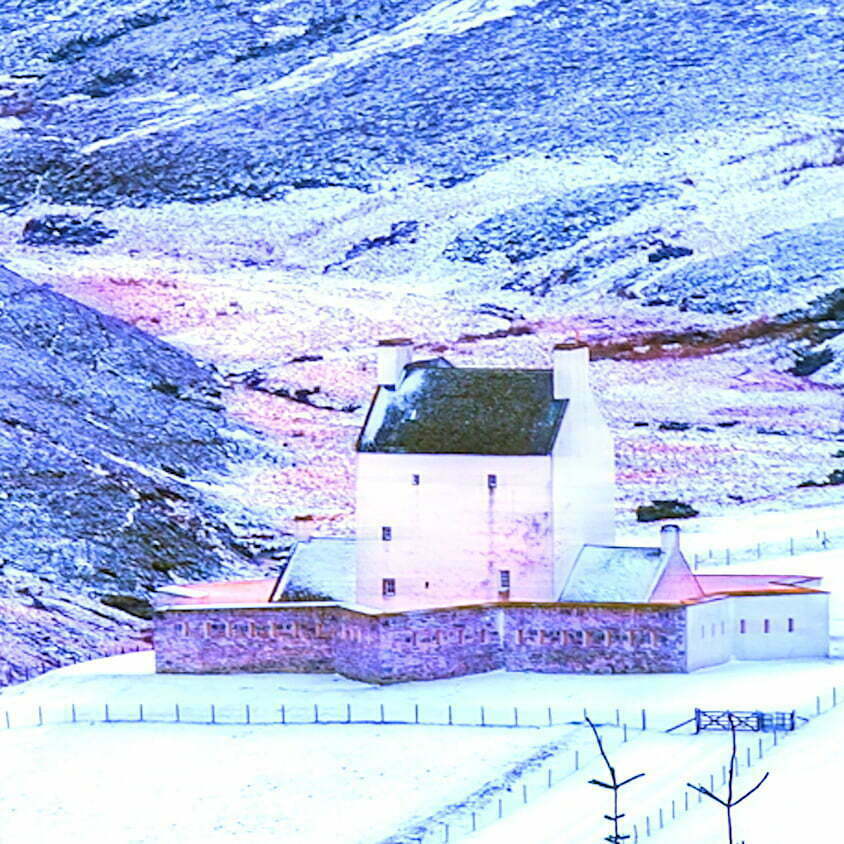Sand, Silt, Flint: Walk Nine: The Lecht
Sand, Silt, Flint is a studio album and song cycle project by Aberdeenshire electronic music composer, sound artist and avant-folk experimentalist Fiona Soe Paing.
From the bleak expanses of The Lecht in the Cairngorms, to the dramatic Banffshire coast, the songs combine Fiona’s original electronica arrangements and mesmerising vocals with re-imaginings of traditional ballads, archive material, field recordings and traditional instrumentation, enveloping the listener in an immersive and unsettling re-imagining of ancient stories.
Each song isalso presented via a series of outdoor geo-located sound walks in the Echoes mobile app; using smart-phones and headphones, the audio is triggered by GPS, enabling audiences to experience the music in the environments which provided it’s inspiration.
Each walk is accompanied by text detailing the local folklore that inspired it and practical information on how to get to each location.
Lass o’ the Lecht
The tragic death of 19 year-old Margaret Cruikshank has been forever immortalized in the ballad of the Lass o’ the Lecht. One day in February 1860 Margaret set out from Auchriachan near Tomintoul with the intension of crossing the Lecht Pass and walking over the Ladder Hills to Corgaff. However, as Margaret discovered to her peril, sudden changes of weather can happen all too often in the Cairngorms and as she was walking a violent blizzard descended over these remote hills. Margaret soon became lost in the snow, and so legend tells us, she decided to follow a stream in the hope it would lead her back to safety. Unfortunately for the poor Lass o’ the Lecht it did the opposite and took her even deeper in to the wintry hills and ultimately to her untimely death. Despite the efforts of a large search party the next day, it wasn’t until three months later in the spring thaw that Luke Grant a local shepherd boy discovered Maragret’s frozen body in Strathdon, on the banks of the river Earnan. The Lass o’ the Lecht was laid to rest in the churchyard in Corgaff and the ballad, as well as telling her story, warns us all to take care in the hills ‘lest unprepared we’re called away, to meet our doom some morning.’
The Lecht Walk
An easy flat walk from the Well of Lecht, located just off the A939 north of The Lecht Ski Centre, to the Mine of Lecht leads along the edge of a stream that could been the one Margaret Cruikshank followed to her peril.
The walk starts at a small car park and picnic area at the Well of Lecht and follows a short public pathway to a disused mine building about a mile away, which can be seen from the start of the walk. The pathway is lined with juniper bushes and runs along level ground and over a small bridge across the stream. Look out for grouse, merlin and golden eagles as well as roe deer and mountain hares along the way. Not long past the bridge there’s a signpost for a public pathway over the hill to Chapeltown. Ignore this and carry straight on to the mine building.
The Lecht Mine produced iron ore in the 1730s and manganese, used for making bleach, in the 1840s. The mine shafts pushed deep underground in the hills just past this building which was used a crushing mill, powered by a large waterwheel now long gone. Studies of the surrounding area have also revealed the remains of medieval shieling huts which would have been used by farmers whose once cattle grazed here in the summer long before the mine shafts were dug. The stream leads on past the abandoned mine deep into the hills and moorlands beyond and it’s not hard to imagine the Lass o’ the Lecht getting lost within the landscape as blizzard closed in.
Before heading home take time to drop into Corgarff Castle close to the churchyard where Margaret Cruikshank is buried and whose history is linked with Auchindoun Castle which features in another walk. This fortress like white castle stands aloft in spectacular landscape at the foot of The Lecht at Cockbridge. It’s reached via a short walk from a dedicated car park and has served as both a fortified home and army barracks. Take time to walk the circle of Corgarff’s star shaped perimeter wall to take in 360 views of the wild landscape dotted with hardy sheep and filled with the distinct peewit call of lapwings piercing through the sounds of the wind.
A final stop has to be The Watchers, situated high in the hills north of Corgarff Castle. Swing into a large signposted layby off the A939 to this natural viewpoint marked with a large modern standing stone whose engraved text encourages us to ‘take a moment to behold, as still skies or storms unfold’. These moments can be behold from The Watchers, four sheltered seats made from Scottish Larch which sit within steel sculptures standing over two meters tall and a perfect spot to take in the sweeping landscape where the Lass o’ the Lecht met her untimely end.
Practical Information
Getting There
The Lecht is a famous pass located in the eastern Cairngorms, Scotland’s largest National Park. The road itself is a stretch of the A939 leading from Strathdon in the south to Tomintoul in the north which at this point is one of the highest main roads in Scotland. The pass leads through a stark, dramatic landscape whose rolling baren hills are unforgiving in winter. Be warned, the road over The Lecht is very steep – 20% in places- and in winter the road often closes if the snow is heavy.
The Lecht Ski Centre sits about half-way along the Pass roughly at the county line between Aberdeenshire and Moray and at a height of 645 meters above sea level. The car park for the Well of Lecht, and start of the walk, is reached via a sharp turning right north of the Ski Centre along a narrow potholed road.
The car park for Corgarff Castle located just off the A939 at Cockbridge. The castle is managed by Historic Scotland and you walk up to and around it at anytime. If you’d like to explore inside Corgarff is open from April to September from 9.30am – 17.30pm (closed for lunch from 12.30pm – 1.30pm). For more information see: https://www.historicenvironment.scot/visit-a-place/places/corgarff-castle/overview/
The Lecht is not accessible via public transport.
Toilets & Refreshments
There are no public facilities at the Well of Lecht, Corgarff Castle or The Watchers. A popular place for refreshments is Goodbrand and Ross, a café, ice cream parlour and gift shop off the A939 east of Corgarff. This chalet style building boasts wide views of the surrounding hills and outdoor picnic tables.
Accessibility
The walks at the Well of Lecht and Corgarff Castle are not accessible, but The Watchers are a good place for anyone to enjoy views of the countryside surrounding the Lecht.

Each walk is written and researched by Lesley Anne Rose.
You purchase Sand, Silt, Flint via Fiona’s Band Camp site.
Image credit: Isla Goldie
Walk Disclaimer
We are not responsible for the maintenance of the pathways and tracks described in each walk. The responsibility lies with the landowner or public body that manages the land. Walks have been researched and written based on the conditions of the track or pathway when we undertook each one. We strongly recommend wearing appropriate walking shoes or boots and outdoor clothing for each walk.
Dogs should be kept on a lead during lambing season (April to July) and be careful to check for ticks when returning from walks between March and October which can cause Lyme Disease. For more information, see: https://forestryandland.gov.scot/visit/activities/walking/check-for-ticks


